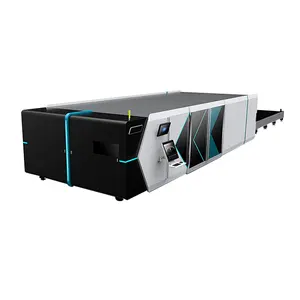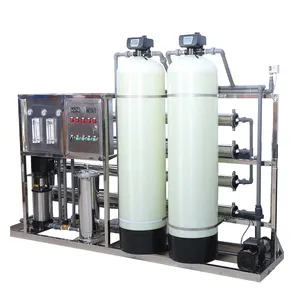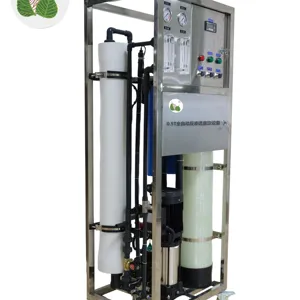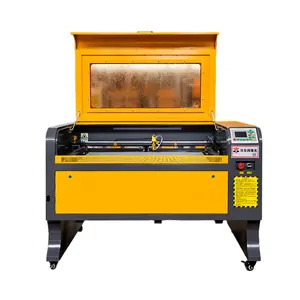Popular in your industry







Related Searches:
























Top categories
About laser cutting machines
What are Laser Cutting Machines
Laser cutting machines are sophisticated tools that utilize a laser to slice materials, suitable for various industrial manufacturing applications as well as smaller businesses and personal use. They are particularly favored in fields where precision cuts and replicability are paramount, such as manufacturing plants, advertising companies, construction projects, and even in garment shops or home use. The principle behind these machines involves directing a high-powered laser, usually through optics, onto the material intended for cutting. The material typically melts, burns, vaporizes, or is blown away by a jet of gas, leaving an edge with a high-quality surface finish.
Professionals who make use of laser cutting machines include those involved in metal cutting, machinery design, CNC machining, and even those in the food industry or restaurants that may require custom-cut materials. The technology works by concentrating a beam of light into a single point through the use of lenses or mirrors, creating intense heat. This heat is what enables the laser to cut through materials like plywood, plastics, paper, MDF, stone, and various metals with precision.
The operation of these machines is controlled by computer numerical control (CNC), which allows for highly detailed cutting patterns that can be replicated with great accuracy. This digital aspect makes it possible to produce complex and delicate designs that might be almost impossible to achieve with traditional mechanical cutting methods. Graphic formats like DXF, AI, BMP, and others are supported by laser cutting software which translates the design into precise cutting paths for the machine to follow.
Types of Laser Cutting Machines
In the realm of laser cutting machines, there's an array of types designed to meet the varied needs of different industries. Each type has its own specific application area and advantages:
CO2 Laser Cutters: These are the most common type of laser cutters and are ideal for cutting non-metallic materials and plastics. They work well for businesses like sign making or for uses in garment shops where intricate designs are essential.
Fiber Laser Cutters: These cutters are primarily used for processing metals. They offer advantages in terms of efficiency and power consumption, making them suitable for tasks in manufacturing plants where metal processing is required.
Crystal Laser Cutters: Using crystals as their laser source, these machines can cut both metallic and non-metallic materials. They have a smaller wavelength than CO2 lasers and thus can work with a wider range of materials.
Nd: YAG or Nd:YVO (neodymium-doped) Lasers: These types are used for very high-energy applications such as boring and engraving.
Each machine type may come with various core components like motors, controllers, laser tubes, or chillers that can affect its performance. Businesses must consider these machine attributes when selecting the appropriate model for their specific needs.
How to choose Laser Cutting Machines
Selecting the right laser cutting machine requires careful consideration of several factors to ensure that it aligns with the intended business use. When evaluating options on Chovm.com's B2B marketplace, consider the following:
Material Compatibility: Choose a machine based on the materials your business most frequently processes. For example, CO2 lasers are great for non-metal materials whereas fiber lasers excel with metals.
Power Requirements: The thickness and toughness of the material you intend to cut will dictate the power output you need from your laser source.
Work Area Size: Ensure that the machine’s bed size can accommodate your largest materials or products.
Software Compatibility: Check if the machine supports file types you typically use in your designs (e.g., DXF or AI).
Automation Level: Depending on your production needs, you may require features like automated loading or programmable settings.
Precision Needs: Consider key selling points such as high-accuracy if your work demands exact cuts.
Best Laser Cutting Machines on Chovm.com
For businesses looking to acquire industry-grade laser cutting machines that stand up to rigorous use while delivering precision and efficiency, Chovm.com stands as a leading online marketplace. With an extensive network of suppliers offering a variety of machinery suitable for an array of industries—from small-scale artisans to large manufacturing plants—buyers can find units that cater precisely to their operational requirements without compromising on quality. Chovm.com’s global reach ensures access to top-tier machinery from suppliers around the world.
The platform’s user-friendly interface simplifies the search process with filters based on machinery features such as cooling mode (water or air-cooled), laser source brand (from an extensive list including Reci and Raycus), and applicable materials (like leather or Plexiglas). Further streamlining procurement efforts is Trade Assurance—a service designed to safeguard payments until order fulfillment is confirmed—enhancing buyer confidence.
Through Chovm.com's comprehensive services that facilitate easy communication in local languages and compatibility with mobile devices for on-the-go business management, sourcing high-performance laser cutting machines aligns seamlessly with strategic business growth objectives. Buyers can leverage this robust marketplace to not only procure equipment but also forge valuable connections with reputable suppliers worldwide.
Common FAQs for Laser Cutting Machines
What materials can be processed by a laser cutting machine?
Laser cutting machines are versatile and can process a range of materials including plywood, plexiglass, leather, plastic, paper, MDF, stone, and various metals. The specific material capabilities depend on the type of laser cutter—CO2 lasers are typically used for non-metals, while fiber lasers are better suited for metals.
What are the benefits of using a CNC laser cutting machine?
CNC laser cutting machines offer precision and repeatability in cutting patterns, which is particularly valuable for complex or intricate designs. They also allow for automation and high processing speeds, increasing efficiency in manufacturing.
Can laser cutting machines engrave as well as cut?
Many laser cutting machines also have the capability to engrave materials. The ability to perform both functions depends on the specific machine's features and settings.
What is the difference between CO2 and fiber laser cutting machines?
CO2 lasers are gas lasers that are commonly used for cutting non-metal materials, whereas fiber lasers use a solid-state setup that is generally more efficient for cutting metallic materials and offers a longer operational lifespan.
How does laser power affect the cutting process?
The power of the laser determines the thickness and the speed at which a material can be cut. Higher-powered lasers can cut through thicker materials at faster speeds but may come with higher operational costs.
What software is compatible with laser cutting machines?
Laser cutting machines often support various graphic formats like DXF, AI, BMP, PLT, DWG, DST, DXP, and LAS through compatible control software such as Cypcut, Ruida, Ezcad, and Lasercut5.3.
What should I consider when choosing a laser source brand for my cutting machine?
Considerations for selecting a laser source brand include compatibility with your materials, desired cut quality, power requirements, longevity of the laser source, and after-sales support available.
How do I maintain a laser cutting machine?
Regular maintenance for a laser cutting machine includes cleaning lenses and mirrors, checking and adjusting calibrations and alignments, ensuring proper cooling system operation, and replacing consumables like nozzles and filters as needed.
What kind of cooling systems do laser cutting machines use?
Laser cutting machines typically use either water cooling or air cooling systems to manage heat produced by the laser. The choice between water or air cooling depends on the machine's power consumption and heat generation.
Are there any specific safety features to look for in a laser cutting machine?
Safety features to consider include protective enclosures to guard against laser exposure, fume extraction systems to ventilate harmful vapors generated during cutting, and emergency stop buttons.
Can I customize a laser cutting machine to fit my business needs?
Many suppliers on Chovm.com offer customization options for their laser cutting machines. These customizations can include changes to the work area size, power output, type of laser source used, or additional features like automated loading or specialized software integration.
How does material thickness impact the choice of a laser cutting machine?
Material thickness is an important consideration because it determines the required power output of the machine’s laser. Thicker materials require higher-power lasers to achieve clean cuts without multiple passes.































